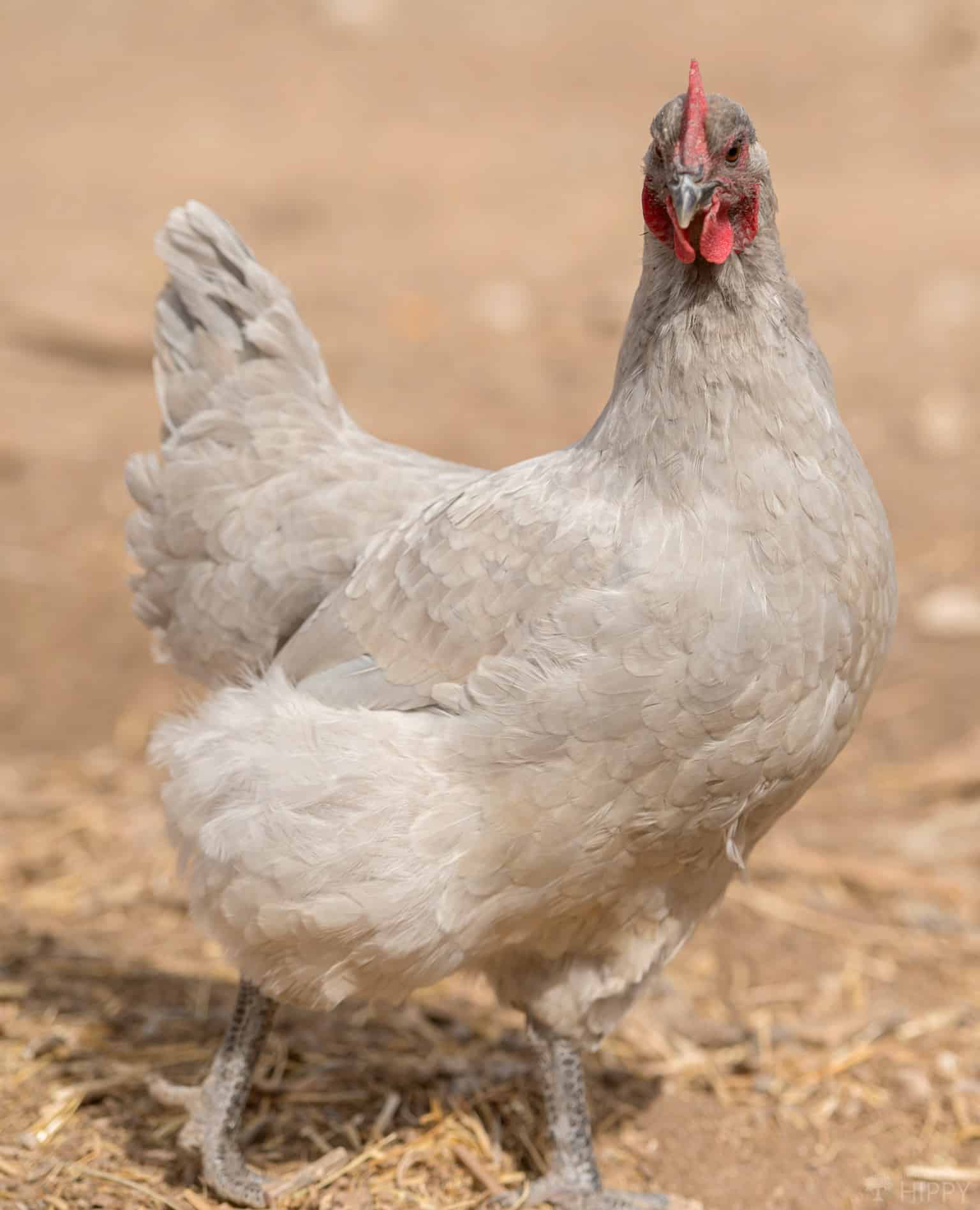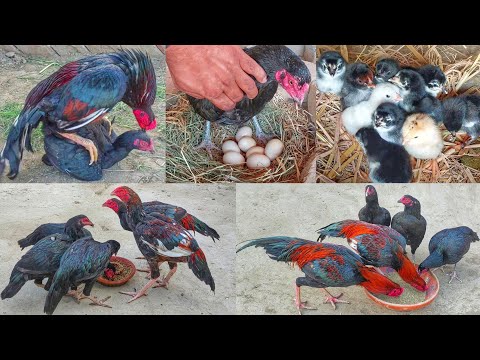For some chicken owners, hatching and raising new chicks themselves in an incubator and then in a brooder is all part of the lifestyle. For others, it is a chore, major drudgery.

If that describes you, why not let nature take care of it as it always has? Some hens are much more prone than others to sitting on and hatching their eggs, and then raising their chicks, and for naturally expanding the size of your flock they can make your life a whole lot easier.
Keep reading and I will tell you all about 12 such breeds that you can rely on to hatch their eggs, or eggs from other hens, reliably.
1. Java
The Java, contrary to its name, is not a foreign breed of domestic chicken but rather is one that was bred from multiple strains of Asian stock in America.
Unfortunately, the exact breeds that resulted in the Javas we know today have been forgotten, and what records exist are fragmentary.
This is bad news and will probably spell doom for these chickens in time because there are precious few of them left.
Nonetheless, they are available and for those who want a broody hen they are a great way to go.
Originally raised as a dual-use breed, these large chickens will routinely try to hatch the eggs that they lay and are excellent mothers to the chicks after they hatch.
Do be careful though, they can be pretty ferocious in defense of their eggs!

2. Cochin
The coaching is another breed that hails from Asia, specifically from China. A fairly popular show bird with a distinct posture and heavily feathered, fluffy legs they are perennially popular with chicken fanciers, and are repeatedly selected and bred for appearance in preference of all other characteristics.
Despite this, Cochins chickens have defied the typical attitude of many showbirds by being dependable layers and very good mothers.
Cochins are so enthusiastic and attentive as mothers that they will even routinely hatch eggs laid by other birds such as ducks and even turkeys!
If you want a good surrogate mother hen to hatch the eggs laid by some chickens that just aren’t interested, Cochins are a great choice.

3. Brahma
Brahmas are another American breed, one that is positively huge and also quite old. For a long time, they had the reputation of being the kings and queens among domestic chickens until the Jersey Giant was developed.
Despite their immensity, Brahmas are known for being docile, stately and easy-going with people making them popular family pets, although they can be bossy with smaller chickens in a mixed flock.
They also happen to be pretty broody, and hens are known to be excellent mothers, though they don’t lay many eggs themselves.

4. Orpington
A popular breed hailing from England and developed in the late 19th century, the Orpington breed was originally an all-purpose bird though their photogenic appearance and magnificent feathers slowly and surely led to them being developed more and more often as a showbird.
Prior to this “redirection” of the breed, they would routinely lay more than 300 eggs every year!
That is impressive production, and although today they can be expected to lay around 200 eggs yearly (still respectable) they have nonetheless maintained a tendency towards being broody, and they are dependable if not doting mothers.
If you really like the breed otherwise, you will definitely be able to reliably expand your flock with them alone…

5. Nankin
Tiny, gorgeous and sadly endangered: these are all characteristics attributed to one of the most venerable true bantam breeds on Earth.
Incredibly popular as pets thanks to their small size even compared to other bantams, and gorgeous plumage, Nankins are nonetheless protective parents, and hens will as a rule want to hatch the eggs that they lay. That’s because they don’t lay very many!
Also curiously, despite their small size Nankins tend to grow quite slowly compared to other breeds, likely because they have not been selected for the rocket-like growth of modern high-production domestic chickens.
It cannot be overstated how broody Napkins are, and they will want to hatch every egg in sight, the ones that they lay or eggs from other birds.

6. Sussex
Probably the single most iconic chicken based on appearances alone, and certainly the one that has appeared in art, photography and popular media the most, the Sussex is a legendary English breed that was originally raised for both the production of eggs and meat, though today they are an expensive and specialized showbird.
The good news is that most Sussex lines tend to be very good layers and also tend towards broodiness, with many hands going broody several times a year.
But the bad news is that not all lines of these magnificent birds or broody, even though they might be good layers.
This could be a perk or flaw for you depending on your preferences, and if you just want a Sussex that will give you plenty of eggs and look good doing it, be sure to inquire about the specific lineage of any specimens that you buy.

7. Dorking
England’s third showing so far on our list, the Dorking is another extra large chicken suspected to be descended from crossbreeding that took place when the English countryside was crawling with Romans.
Everything about these birds is big: tall, imposing posture, thick legs, heavily muscled bodies and big appetites to feed their rapid growth.
All adults will exceed 10 pounds as a rule, and some truly huge roosters can surpass 11 pounds.
Despite this, Dorkings are typically broody and are caring parents, meaning they are more than happy to both hatch and raise their chicks.
Something else to know is that Dorkings, including the roosters, are very enthusiastic about keeping their precious babies safe, and dealing with one of these boisterous bruisers could leave you with welts and scratches if you aren’t careful!

8. Cubalaya
The Cubalaya is a crossbreed developed in, as you probably guessed, Cuba from various Indian and Spanish lineages.
These chickens are known for a few of things: a tall and ferocious appearance, a lengthy, peacock-like tail, and truly gorgeous, vivid plumage.
Even though they look like hair-trigger fighters, these chickens are surprisingly friendly and tend towards being broody, and hens are invariably good sitters and caring mothers.
But be warned: these chickens were originally bred as gamefowl, and they can prove it if you mess with them when they’re trying to protect their chicks!

9. Old English Game
One of the oldest western game breeds, the Old English Game is a breed known to be very, shall we say, spirited.
And though most are not known to be good layers the hens are surprisingly good moms. An Old English Game hen will usually try to hatch a clutch of eggs that she lays, and you will rarely see a more careful and diligent mother.
Pretty much devoid of practical domestic purpose these days, these chickens are typically only kept by fanciers, though it’s good to know you can depend on your favorite birds alone to expand your flock.

10. Modern Game
If you like the idea of a game chicken like the Old English Game above, but don’t want the attitude problems that come with it, consider the Modern Game breed.
Crossbred with various other lines from several other breeds, these chickens have many of the same characteristics, but generally far friendlier attitudes.
But like the Old English Game that sired them, these are showbirds and enthusiast’s specimens only: they don’t lay very many eggs, and are not a great choice if you want meat but hens are fairly broody, pretty good sitters and decent mothers.

11. Aseel
Another game breed, this one hailing from India, the Aseel is one of the oldest purebreds that we know of today, and a progenitor of the Old English Game described above.
These chickens have many notable characteristics, but for our purposes they don’t lay very many eggs, with 60 or perhaps 70 in an exceptional hen being the upper limit.
Because of this, hens will want to hatch pretty much all of these eggs, so you can depend on them going broody pretty much all the time.

12. Silkie
You knew it was going to be on this list eventually. The Silkie is absolutely famous for its calm demeanor and gorgeous, fluffy, fur-like plumage, but what some beginners don’t know is that these birds are absolutely stellar mothers, and most tend toward being quite broody. And by quite, I mean supremely!
Silkie hens will want to hatch every egg in sight, not just their own, and they are regularly used to hatch eggs from other chickens and even other species of bird.
Deprived of any eggs, silky hens are also known to try and hatch river stones, small balls and other objects that are about the size and shape of an egg! The poor things!
If a chicken that hatches eggs is what you’re after, you will never do better than a Silkie…

The post The Best 12 Broody Hen Breeds to Choose From appeared first on The Homesteading Hippy.

